
Question and Answers Forum
Question Number 89281 by ajfour last updated on 16/Apr/20
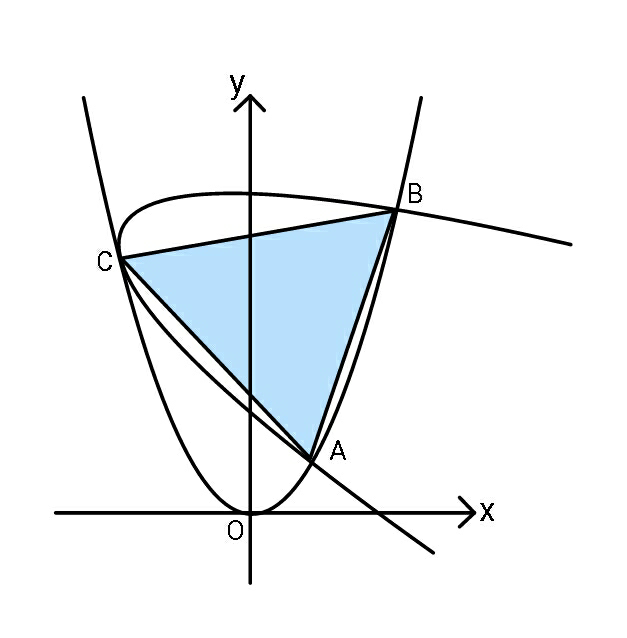
Commented by ajfour last updated on 17/Apr/20
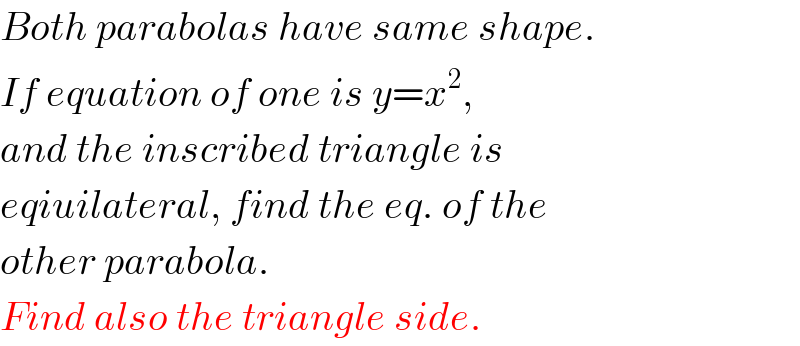
Commented by ajfour last updated on 17/Apr/20

Answered by mr W last updated on 17/Apr/20
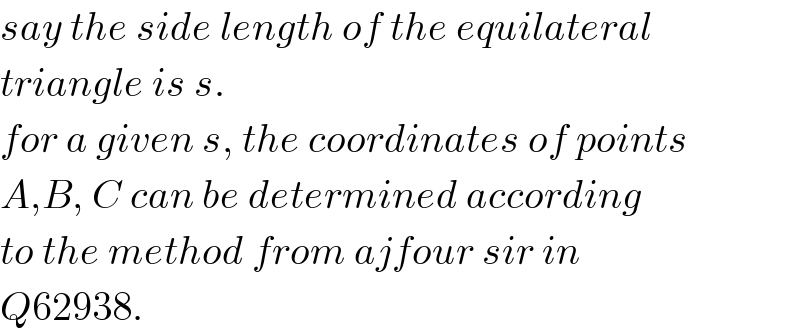
Commented by mr W last updated on 24/Apr/20
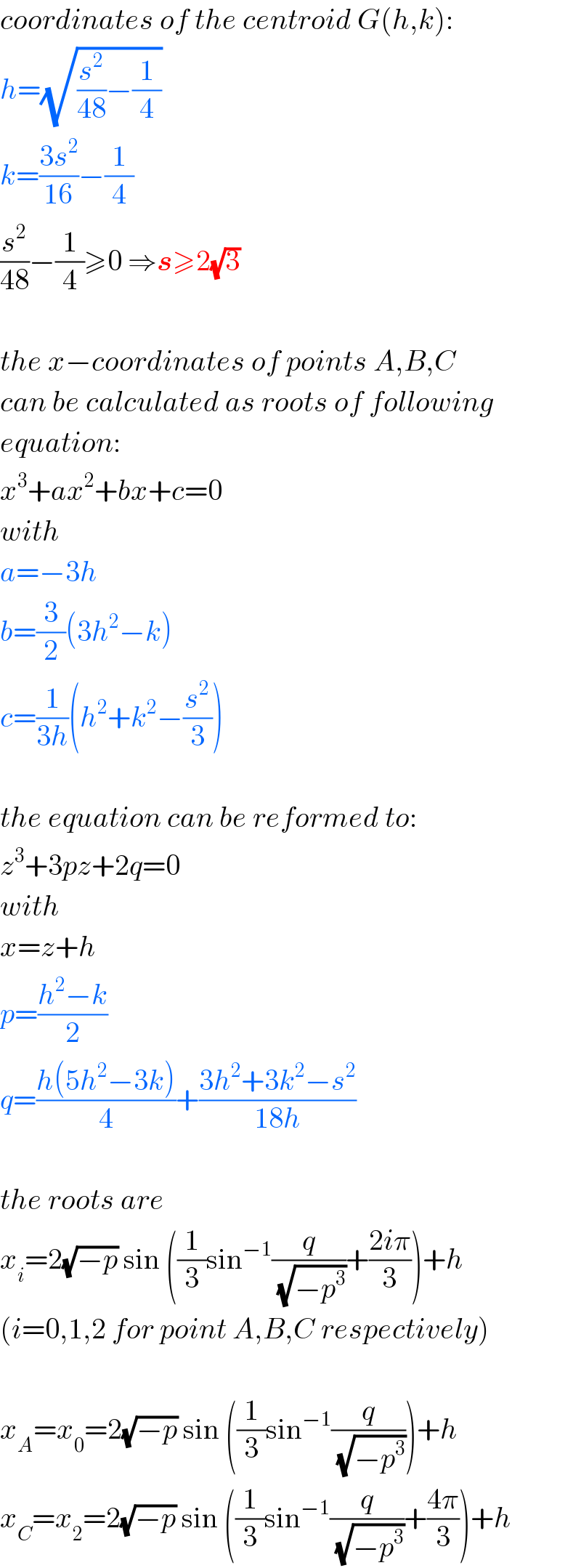
Commented by ajfour last updated on 18/Apr/20

Commented by mr W last updated on 17/Apr/20
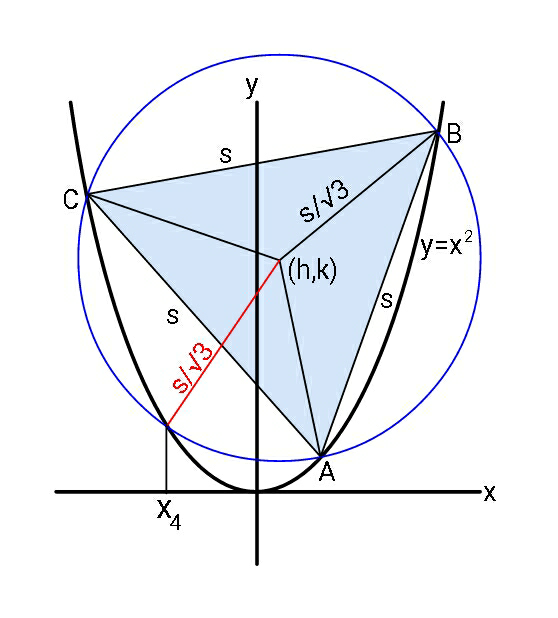
Commented by mr W last updated on 18/Apr/20

Commented by mr W last updated on 17/Apr/20
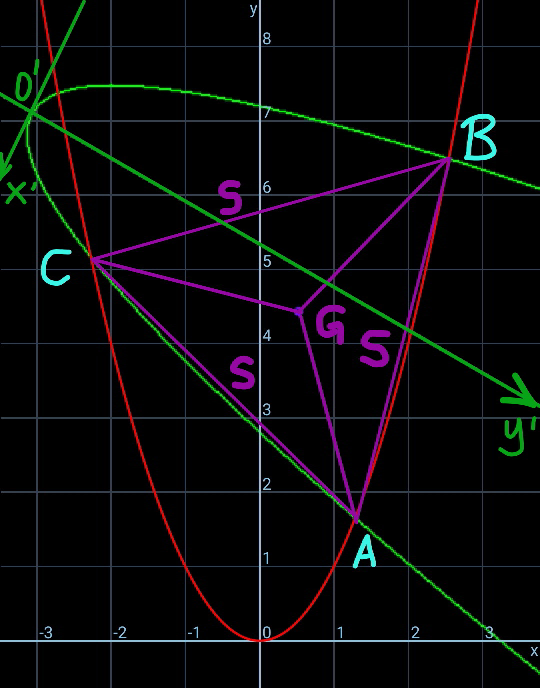
Commented by mr W last updated on 18/Apr/20
![since both parabolas have the same shape and the triangle is equilateral, the correlation between the second parabola and the triangle is the same as the correlation between the first parabola and the triangle. the second parabola is just the first parabola after a rotation of 120° about the centroid G of the triangle. and the point A is rotated to the position of point C, point B to the position of point A, point C to the position of point B. from Q55613 we know: when a curve y=f(x) is rotated about the point (h,k) by an angle θ (clockwise +), it becomes the curce v=f(u) with u=(x−h) cos θ−(y−k) sin θ+h v=(x−h) sin θ+(y−k) cos θ+k in current case: θ=120° from y=x^2 we get then ((√3)/2)(x−h)−(1/2)(y−k)+k = [−(1/2)(x−h)−((√3)/2)(y−k)+h]^2 or 2(√3)(x−h)−2y+3k=[x−2h+(√3)(y−k)]^2 this is the equation of the second parabola with h=(√((s^2 /(48))−(1/4))) k=((3s^2 )/(16))−(1/4) but there is an other condition: both parabolas should touch each other at point C.](Q89561.png)
Commented by mr W last updated on 17/Apr/20
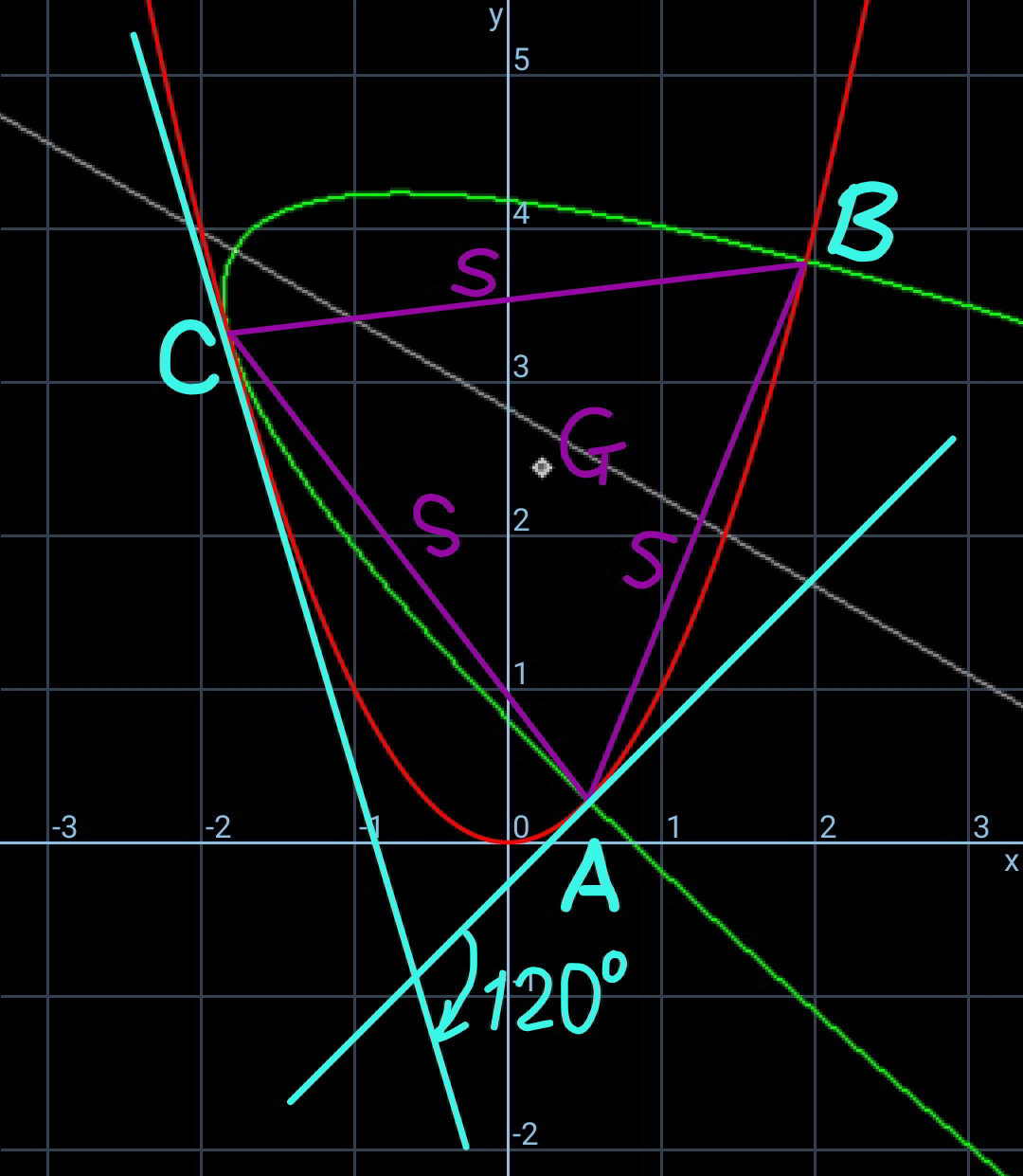
Commented by ajfour last updated on 18/Apr/20
hence side of triangle, remains to be obtained.. side of triangle under the tangency condition, must be unique.
Commented by mr W last updated on 24/Apr/20
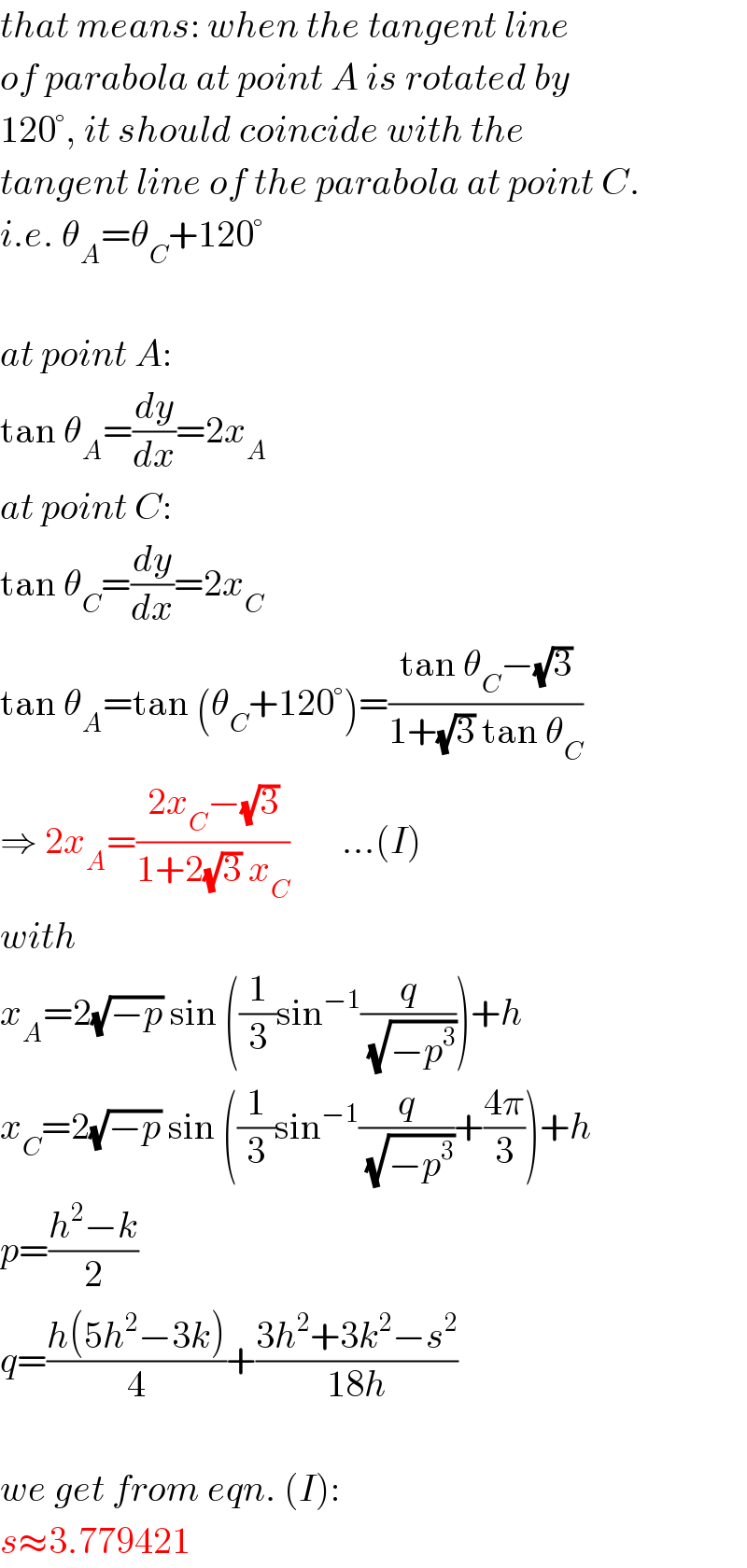
Commented by mr W last updated on 18/Apr/20
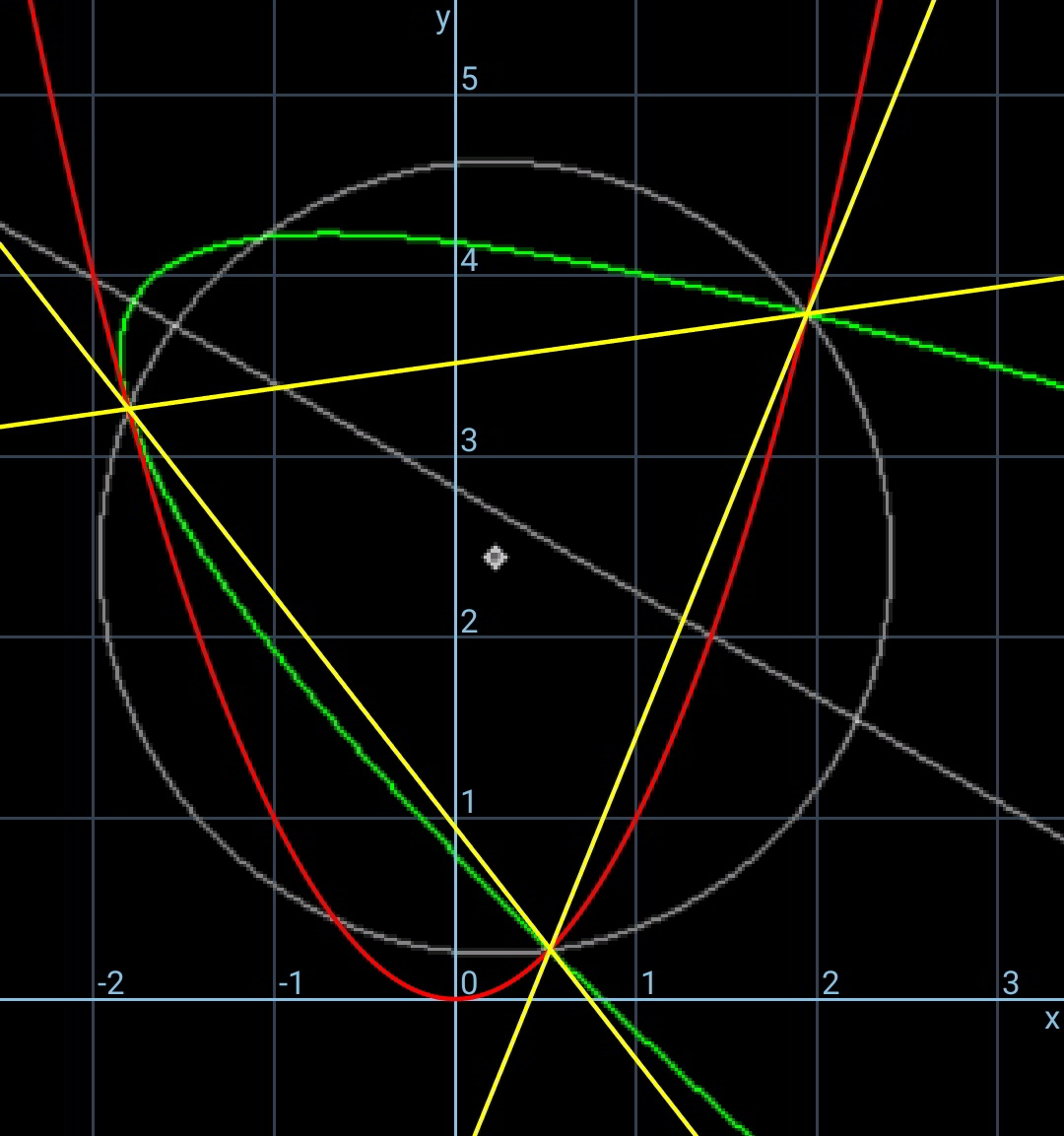
Commented by ajfour last updated on 18/Apr/20

